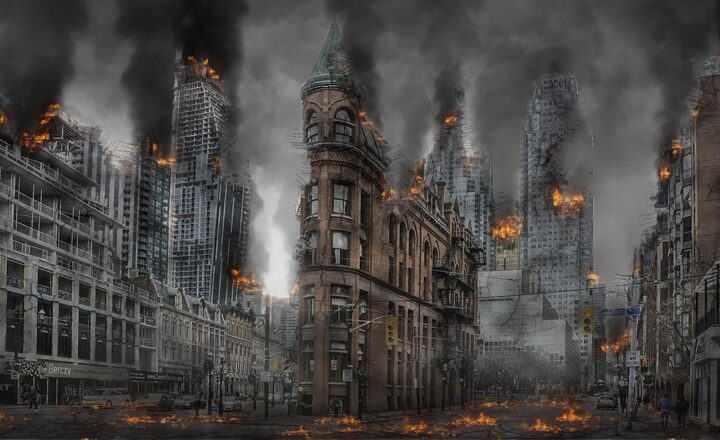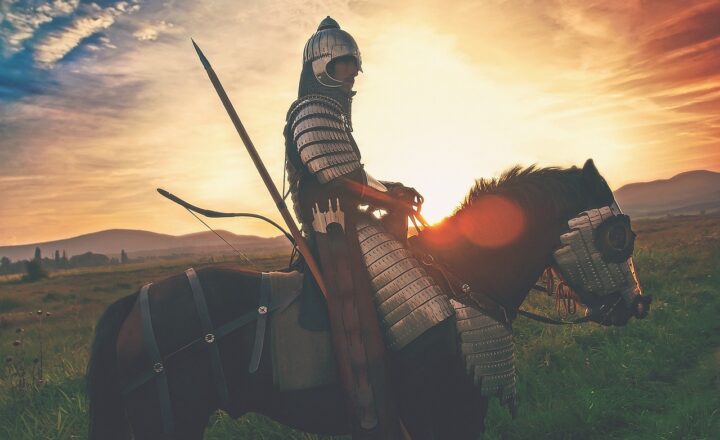
Cannons have played a significant role in shaping the course of history, from their early development in China to their critical role in global conflicts. These formidable weapons changed the dynamics of trade, politics, and warfare, affecting empires and nations on an unprecedented scale.
In this article, we will explore the evolution of cannons, their technological advancements, and their impact on world empires throughout history.
1. The Origins of Cannons
The birth of cannons can be traced back to the 9th century in China, where gunpowder was invented. Initially used in simple rockets and bombs, gunpowder weaponry evolved into larger and more powerful artillery pieces. By the mid-13th century, the Chinese had developed the first true cannons, known as ‘hand cannons’ or ‘bombards.’
These early cannons were made of bronze or iron, capable of firing projectiles, and relied heavily on gunpowder for propulsion. The primary purpose of these weapons was to breach the walls of fortifications during sieges, marking a pivotal shift in siege warfare.
2. The Spread of Cannon Technology in Europe
Cannons made their way to Europe by the late 14th century, largely due to the increase in trade and cultural exchange along the Silk Road. The introduction of these weapons revolutionized European warfare as feudal lords began incorporating cannons into their military arsenals.
One of the earliest mentions of cannons in Europe dates back to 1326 during the siege of the castle of Breisach. From that point on, cannon technology evolved rapidly, leading to the establishment of dedicated artillery units within armies.
By the 15th century, the effectiveness of cannons in battle became undeniable. This new form of warfare spelled disaster for traditional walled fortifications that had dominated medieval Europe, leading to the development of star forts and other defensive structures designed to withstand cannon fire.
3. The Cannons of the Renaissance and Beyond
During the Renaissance, advancements in metalworking allowed for the production of larger and more powerful cannons. This era saw the emergence of so-called ‘culverins’ and ‘basilisks,’ which boasted increased range and firepower. Battles became heavily reliant on cannon fire, and the ability to fire multiple rounds also gave armies a decided advantage.
Some of the most iconic cannons of this era include:
- The Great Turkish Bombard (1464): A massive cannon constructed by the Ottomans, known for its siege capabilities during the fall of Constantinople.
- The Mons Meg (1457): A giant cannon used by the Scots, famous for its ability to fire stone cannonballs weighing up to 150 kg over great distances.
Cannons not only transformed battlefield strategies but also altered the political landscape of Europe. Nations invested heavily in artillery production, establishing themselves as formidable powers.
4. Cannons as Tools of Empire Expansion
Cannons significantly contributed to the expansion of empires throughout the 16th to 19th centuries. The Spanish, Portuguese, British, and French used cannons to support naval supremacy and colonization efforts in the Americas, Africa, and Asia.
The effectiveness of cannons was evident during maritime conflicts like the Spanish Armada in 1588 and in numerous colonial skirmishes. The British East India Company, for instance, utilized powerful ships armed with cannons to assert control over Indian territories.
As empires expanded, they relied on the formidable firepower of cannons to conquer and subjugate foreign lands, fundamentally altering the global balance of power. Trade, diplomacy, and warfare were forever marked by the thunderous roar and destructive potential of these weapons.
5. The Role of Cannons in Revolutionary Wars
Cannons played critical roles in various revolutionary wars, including the American and French Revolutions. Their presence on the battlefield became synonymous with revolution and rebellion against oppressive regimes.
In the American Revolutionary War, cannons proved essential during key battles such as the Siege of Boston, where American forces used cannons to force British troops to evacuate. Meanwhile, during the French Revolution, the use of cannons by revolutionary forces signaled a shift in power from monarchies to the people.
The development of new artillery techniques, including the use of explosive shells and canister shots, also revolutionized the way wars were fought. By the end of the 19th century, cannons transitioned into more advanced artillery, representing the next phase in military evolution.
6. Modern Cannons and Legacy
The legacy of historical cannons continues to resonate in modern warfare. Though now evolved into sophisticated artillery systems, the foundational principles of cannon usage remain integral to military strategies. Current artillery technology capitalizes on the advancements made during the cannon era.
Today, cannons are used in various forms, including howitzers, field guns, and naval guns, all of which have roots tracing back to early cannon technology. Military doctrines continue to embrace the lessons learned from two centuries of cannon warfare.
Moreover, cannons remain a symbol of historical significance. Historical battlefields, museums, and monuments often commemorate cannons as reminders of their impact on shaping nations and empires.
Conclusion
The history of cannons is a story of innovation, power, and influence. From their humble beginnings in ancient China to instruments of empire-building and modern warfare, cannons have fundamentally transformed human conflict and political landscapes. Their legacy echoes through the ages, highlighting the interplay between technology, warfare, and society. As we analyze the historical significance of cannons, we gain insights into how these weapons shaped our world today.
Understanding the impact of cannons invites us to reflect on the broader themes of technological advancement, strategic military thought, and the complex nature of human conflict across the ages.






